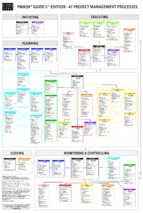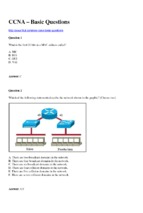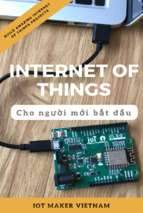Communications of the Association for Information Systems
Volume 28
Article 25
5-2011
Current and Future Issues in BPM Research: A
European Perspective from the ERCIS Meeting
2010
Jan vom Brocke
University of Liechtenstein,
[email protected]
Jörg Becker
University of Muenster, Germany
Alessio Maria Braccini
LUISS University, Rome, Italy
Rimantas Butleris
Kaunas University of Technology, Lithuania
Birgit Hofreiter
University of Liechtenstein
See next page for additional authors
Follow this and additional works at: http://aisel.aisnet.org/cais
Recommended Citation
vom Brocke, Jan; Becker, Jörg; Maria Braccini, Alessio; Butleris, Rimantas; Hofreiter, Birgit; Kapočius, Kęstutis; De Marco, Marco;
Schmidt, Günter; Seidel, Stefan; Simons, Alexander; Skopal, Tomáš; Stein, Armin; Stieglitz, Stefan; Suomi, Reima; Vossen, Gottfried;
Winter, Robert; and Wrycza, Stanislaw (2011) "Current and Future Issues in BPM Research: A European Perspective from the ERCIS
Meeting 2010," Communications of the Association for Information Systems: Vol. 28 , Article 25.
Available at: http://aisel.aisnet.org/cais/vol28/iss1/25
This material is brought to you by the Journals at AIS Electronic Library (AISeL). It has been accepted for inclusion in Communications of the
Association for Information Systems by an authorized administrator of AIS Electronic Library (AISeL). For more information, please contact
[email protected].
Current and Future Issues in BPM Research: A European Perspective from
the ERCIS Meeting 2010
Authors
Jan vom Brocke, Jörg Becker, Alessio Maria Braccini, Rimantas Butleris, Birgit Hofreiter, Kęstutis Kapočius,
Marco De Marco, Günter Schmidt, Stefan Seidel, Alexander Simons, Tomáš Skopal, Armin Stein, Stefan
Stieglitz, Reima Suomi, Gottfried Vossen, Robert Winter, and Stanislaw Wrycza
This panel report is available in Communications of the Association for Information Systems: http://aisel.aisnet.org/cais/vol28/iss1/
25
Current and Future Issues in BPM Research: A European Perspective from the
ERCIS Meeting 2010
Jan vom Brocke
University of Liechtenstein,
[email protected]
Alexander Simons
University of Liechtenstein
Jörg Becker
University of Muenster, Germany
Tomáš Skopal
University of Prague, Czech Republic
Alessio Maria Braccini
LUISS University, Rome, Italy
Armin Stein
University of Muenster, Germany
Rimantas Butleris
Kaunas University of Technology, Lithuania
Stefan Stieglitz
University of Muenster, Germany
Birgit Hofreiter
University of Liechtenstein
Reima Suomi
University of Turku, Finland
Kęstutis Kapočius
Kaunas University of Technology, Lithuania
Gottfried Vossen
University of Muenster, Germany
Marco De Marco
Catholic University of Milan, Italy
Robert Winter
University of St.Gallen, Switzerland
Günter Schmidt
Saarland University, Germany
Stanislaw Wrycza
University of Gdansk, Poland
Stefan Seidel
University of Liechtenstein
Business process management (BPM) is a still-emerging field in the academic discipline of Information Systems
(IS). This article reflects on a workshop on current and future issues in BPM research that was conducted by
seventeen IS researchers from eight European countries as part of the 2010 annual meeting of the European
Research Center for Information Systems (ERCIS). The results of this workshop suggest that BPM research can
meaningfully contribute to investigating a broad variety of phenomena that are of interest to IS scholars, ranging
from rather technical (e.g., the implementation of software architectures) to managerial (e.g., the impact of
organizational culture on process performance). It further becomes noticeable that BPM researchers can make use
of several research strategies, including qualitative, quantitative, and design-oriented approaches. The article offers
the participants’ outlook on the future of BPM research and combines their opinions with research results from the
academic literature on BPM, with the goal of contributing to establishing BPM as a distinct field of research in the IS
discipline.
Keywords: business process management, research agenda, European Research Center for Information Systems
Volume 28, Article 25, pp. 393-414, May 2011
Volume 28
Article 25
Current and Future Issues in BPM Research: A European Perspective from the
ERCIS Meeting 2010
I. INTRODUCTION
The relevance of business process management (BPM) is widely recognized in both industry and academia. The
Gartner Group [2010], for example, identified the improvement of business processes as a top issue on the agenda
of CIOs for the sixth year in a row. At the same time, BPM has emerged as an important subfield of IS research
[Rosemann et al., 2006; Rosemann and vom Brocke, 2010; Seethamraju, 2010]. IS research has been framed as
the study of ―(1) how IT artifacts are conceived, constructed, and implemented, (2) how IT artifacts are used,
supported, and evolved, and (3) how IT artifacts impact (and are impacted by) the contexts in which they are
embedded‖ [Benbasat and Zmud, 2003, p. 186]. Over recent years it has become apparent that business processes
are executed in a socio-technical context that cannot be separated from the involved information technology (IT). As
such, we believe that the study of business processes is at the core of IS research as long as it pertains to the
immediate nomological net of the IT artifact, which has been framed to include IT capabilities, the IT artifact, and its
usage and impact, as well as IT managerial, methodological, and operational practices [Benbasat and Zmud, 2003].
Accordingly, IS researchers have been targeting a broad variety of BPM-related topics, ranging from the conceptual
design of business processes [Recker et al., 2006] to business process automation [van der Aalst and ter Hofstede,
2005] and management-oriented issues such as governance [Indulska et al., 2006] or culture [Zairi, 1997; vom
Brocke and Sinnl, 2010].
Not only, however, does BPM research cover a broad range of topics, it also applies a multitude of different research
methods. While much work is conceptual in nature [e.g., Rosemann and van der Aalst, 2007], there are also
examples of empirical work, including case studies [Bandara et al., 2005], focus groups [Raduescu et al., 2006],
semi-structured interviews [Recker et al., 2006], and Delphi studies [de Bruin and Rosemann, 2007]. BPM research,
however, is not only characterized by an abundance of conceptual work―it also features little theory development
[Rosemann et al., 2006; Seidel and Recker, 2009].
Against this background, a workshop on current and future issues in BPM research was conducted at the annual
ERCIS meeting held in Vaduz (Liechtenstein) in March 2010. Seventeen IS researchers from eight different
countries discussed contemporary BPM issues and the challenges they deemed most relevant for the IS domain.
This article summarizes their experiences and opinions and combines them with the academic literature on BPM.
Each workshop participant contributed to this article by detailing his or her thoughts and ideas regarding one out of
ten seminal BPM research areas, which were identified and discussed during the workshop.
The remainder of the article is structured as follows. Section II provides an overview of BPM as an emergent and,
until today, predominantly conceptual and design-oriented domain of IS research and summarizes works related to
the topic. This is followed by a description of the ten BPM research areas that were identified during the workshop,
including potential research problems and questions to be explored by fellow IS researchers and suitable research
methods they may apply. Section IV then discusses these findings in the light of existing research in the IS domain.
Section V concludes the article and acknowledges limitations.
II. BACKGROUND
Notions such as BPM and business process are open to many interpretations. To make the following explanations
as clear as possible, some terms shall thus be introduced first. BPM as a holistic management approach has its
roots in practices such as Kaizen [Masaaki, 1986], Business Process Reengineering [Davenport and Stoddard,
1994; Hammer, 1996; Hammer and Champy, 1993], Total Quality Management [Powell, 1995], and Process
Innovation [Davenport, 1993]. The Australian Community of Practice [2004] defines BPM as ―a structured, coherent
and consistent way of understanding, documenting, modeling, analyzing, simulating, executing and continuously
changing end-to-end business processes and all involved resources in light of their contribution to business
success.‖ A business process represents a series of tasks or activities that need to be carried out in order to
collectively realize an organizational objective or policy goal, and a set of conditions that determine the order of the
tasks [Becker and Kahn, 2010; Hammer, 1990; van der Aalst and van Hee, 2002]. The relevance of BPM-related
issues hasCurrent
been reinforced
by a number
of high-impact
studies. In aA2010
global study,
for example,from
the Gartner
and Future
Issues
in BPM Research:
European
Perspective
the
Group [2010] identified the improvement of business processes as a top issue on the agenda of CIOs for the sixth
ERCIS
Meeting
2010
year in a row. Consequently, BPM has been addressed by IS researchers from various perspectives, including, but
not limited to, process modeling [Rosemann and van der Aalst, 2007], process design [Janson and Wrycza, 1996],
process automation [van der Aalst and ter Hofstede, 2005], and process optimization [Reijers and Mansar, 2005].
Volume 28
394
Article 25
Work in such areas, however, has been predominantly conceptual, focusing on the design of specific BPM artifacts.
This can be illustrated with the example of process modeling, where a variety of grammars, tools, and methods have
been developed and evaluated during the past years.
For example, in her review in the field of business process modeling, Aguilar-Savén [2004] describes several
modeling grammars (e.g., flow charts, role activity diagrams [RAD], role interaction diagrams [RID], Gantt charts, or
Petri nets). Abeysinghe and Phalp [1997] study two exemplar modeling grammars (Hoare’s Communicating
Sequential Processes [CSP] and a subset of RAD) and illustrate how they can be combined into a new approach to
process modeling. Damij [2007] uses comparative analysis to analyze two groups of modeling grammars, namely
diagrammatic and tabular techniques, and van der Aalst [1999] maps event-driven process chains (EPC) onto Petri
nets, thus providing formal semantics to the EPC grammar. Existing research on process modeling tools and
methods draws a similarly colorful picture: Georgakopoulos et al. [1995], for instance, provide an overview of several
workflow management methodologies and software products. Picking up on the large number of available process
modeling methods and tools, Luo and Tung [1999] propose a framework for selecting adequate methods on the
basis of modeling objectives. Giaglis [2001] presents an approach for evaluating process modeling grammars based
on the work by Curtis [1992], and Mentzas et al. [2001] study the pros and cons of adopting alternative techniques
for workflow representation in process modeling.
In conclusion, it appears as if much of the past IS research on process modeling is rather advocative in nature
[Moody, 2005]; many works ―propose new artifacts, make claims on benefits and performance, and advocate
adoption in practice based on an illustrative example‖ [Recker, 2008, p. 44]. Consequently, some IS authors in the
field have already lamented the relatively small number of empirical and theoretical studies on process modeling
[Eikebrokk et al., 2008; Indulska et al., 2009; Sedera et al., 2004].
The example of process modeling representatively demonstrates that the emergent area of BPM is characterized by
an abundance of conceptual work. While it has been argued that there is a general lack of foundational theory in
BPM research [de Bruin, 2007; Seidel and Recker, 2009], some empirical studies have been conducted
nevertheless. For example, Rosemann et al. [2006] develop a theory of BPM progression in organizations, Recker
[2008] builds and tests a model of process modeling standard adoption, and Bandara et al. [2005] propose a
theoretical model of critical success factors in process modeling. Consequently, there is a certain diversity in BPM
research regarding research approaches. Recent studies in the field, however, also suggest that BPM research
further exhibits and demands topic-related diversity. It has been argued, for example, that BPM maturity requires
development in a number of different capability areas, including strategic alignment, governance, methods, IT,
people, and culture [de Bruin and Rosemann, 2007].
As it is the case for the IS discipline as a whole [Benbasat and Weber, 1996], BPM can thus be considered a
multifaceted field of research regarding both research topics and methods. While existent BPM models [e.g.,
Rosemann and vom Brocke, 2010] can set the frame for IS researchers, they do not offer many insights into the
actual problems and questions that BPM research should be focusing on, let alone any prioritization of research
methods. The majority of related works in the field of BPM discuss the importance of themes regarding specific
BPM-related areas. Indulska et al. [2009], for example, investigate current issues and future challenges in the area
of business process modeling (as perceived by academics, practitioners, and tool vendors). In our literature
analysis, we found only the works by Bandara et al. [2007] and Indulska et al. [2006] that aim at identifying a broader
research agenda for BPM. Indulska et al. [2006] conducted a series of focus groups with Australian organizations
and separate major issues in BPM, as perceived by the participants, into strategic, tactical, and operational level
issues. Examples include change management, lack of governance (strategic level), lack of expertise, lack of
coordination (tactical level), or lack of tools for holistic BPM and lack of technology capability (operational level).
Bandara et al. [2007] conducted a series of fourteen expert interviews and likewise identified issues at the three
levels. Examples include lack of governance, lack of employee buy-in (strategic level), lack of standards,
weaknesses in process specification (tactical level), or lack of tool support for process visualization, and perceived
gaps between process design and process execution (operational level). As BPM can be regarded an applied
discipline, the practitioners’ viewpoints and opinions presented in these articles are certainly of high importance. Yet,
we also deem it relevant to learn about the current and future areas of inquiry that IS researchers are interested in.
We believe that such knowledge becomes crucial when it comes to setting up a future research agenda for the area
of BPM. With the present article, we aim to contribute to this discussion by providing a European researchers’
perspective onto relevant topics in the area of BPM for future inquiry.
Volume 28
Article 25
395
III. IDENTIFYING ISSUES FOR FUTURE BPM RESEARCH
The Workshop Setting
We conducted a workshop with seventeen IS researchers from eight European countries, namely Czech Republic,
Finland, Germany, Italy, Liechtenstein, Lithuania, Poland, and Switzerland. The participating scholars, all of whom
are authors of this article, have diverse IS-related backgrounds, ranging from technical to managerial. As a
consequence, not only do their research interests vary, but also the methods they apply. At the outset of the
workshop, each participant presented three BPM research issues that he or she deemed most relevant for the IS
domain, which were then grouped into a set of ten rather broad themes in an open discussion. These themes were
then further discussed and detailed. In the following sections, for each topic that was identified, we discuss its
relevance for the IS discipline, related research problems and questions, and research methods that can be used for
their study.
Reuse in Business Process Modeling
Conceptual process models are a means to capture, document, and analyze business processes, and they are, for
example, used in business process (re)engineering or business change projects [Fettke and Loos, 2007; Rosemann
and van der Aalst, 2007; vom Brocke et al., 2010]. While process models can improve the quality of IS
implementations [Scheer and Nüttgens, 2000], their design is complex, error-prone, and time-consuming [e.g.
Becker et al., 2009]. In contrast to ad-hoc models that are typically used in specific application contexts, reference
process models (hereafter reference models) are developed with the intention to provide common or best practice
processes for a certain domain. The users of reference models are provided with both a generic view on this domain
and a common vocabulary. The practical relevance of the topic finds its expression in a large number of reference
models that are used in day-to-day business. Examples include supply chain management [SCC, 2009], retail
[Becker and Schütte, 2007], and production processes [Scheer, 1994]. At the same time, a large number of
academic publications on reference modeling can be found in the European IS literature.
Reference models typically serve as blueprints for a number of organizations and they are thus designed at
relatively high levels of abstraction. At the same time, however, the models must allow organizations to easily adapt
them to individual requirements [Fettke and Loos, 2004; Scheer, 1994]. This adaptation requires the use of
techniques that adequately support the design of reusable reference models [vom Brocke, 2006]. While some
reference models address very similar topics and requirements, they frequently differ with regard to coverage, level
of detail, or applied modeling language [Fettke and Loos, 2003]. Common failures related to the development of
reusable reference models are (a) nonrigorous design processes, (b1) the disregard of formal modeling languages,
and (b2) the use of overly complex modeling languages. Future research on the development and adoption of
reference models should accordingly focus on (a) the design and evaluation of guidelines for the rigorous
development of reference models that are still relevant to practitioners, and (b) the development of modeling
languages that not only allow for adequate representations of real world scenarios at different levels of abstraction,
but also provide the means for efficiently adapting the reference models to individual, company-specific
requirements. An example is building block-based modeling, where model elements can provide process semantics
or even represent entire sets of process patterns. It is our belief that such research can lead to the development of
reference models that are more comparable, linkable, and hence reusable.
Research on reference modeling typically follows the design science paradigm [Hevner et al., 2004]. A reference
model can be considered an IT artifact just like the applied modeling language or method and the constituting model
elements [March and Smith, 1995]. Design science research is an iterative process that builds on, and extends, the
existing knowledge base for constructing and evaluating artifacts that are both innovative and purposeful [Hevner et
al., 2004]. Regarding the evaluation of reference models, researchers can make use of a variety of qualitative
strategies and methods, including interviews, case studies, or action research. At the same time, the design of
reference models should be informed by existent theory in order to ensure the development of reference models that
have not only been rigorously designed but also address contemporary business needs.
Value-Orientation in BPM
While BPM essentially seeks to generate value for customers [Hammer, 2010], surprisingly little research has been
conducted on value creation through BPM (i.e., on the concept of BPM value). Much of the related research revolves
around the field of process analytics, including research on process simulation [Gregoriades and Sutcliffe, 2008],
process mining [van der Aalst, 2005], or the Balanced Scorecard [Kaplan and Norton, 1991]. While these and
related approaches tend to focus on evaluating the performance of processes at run-time, few insights have been
gained on evaluating alternative process designs at build-time. The design of a business process, however, typically
requires several important decisions, for example, regarding its control flow or the involved technologies and
organizational resources. These decisions significantly impact the potential value contribution of a process [vom
Brocke et al., 2010].
Volume 28
396
Article 25
One major challenge for future research accordingly is to better understand the economic consequences of
decisions made during the design of a process. While one of the most important questions is ―What is the Return on
Investment of process change?‖ this challenge obviously exceeds financial considerations. The stakeholder theory
[Rappaport, 1986], for example, suggests that BPM value can be analyzed from very different perspectives, and,
according to recent work in the field of sustainability-aware BPM, ecological and social responsibilities constitute
additional value dimensions of BPM [Seidel et al., 2010b]. Another emerging stream of research on networked
processes [Grefen et al., 2009] illustrates the challenges that are associated with assessing BPM value. Networks
turn out to be crucial organizational forms in the globalized market, and in this context, process innovations not only
influence the value a particular organization creates, but also the global value of the network(s) the organization is
embedded in. It is our belief that research should thus be grounded in a better understanding of BPM value and
related concepts in order to further theorize about how BPM creates value in different contexts.
As opposed to prior research on IS value assessment that mainly evolved around the so called ―productivity
paradox‖ [Brynjolfsson, 1993], a rather decision-oriented approach to the above challenge appears promising. The
idea, then, is not to answer the question whether value may be created [Carr, 2004], but rather to inform decision
makers how to assess the value of a process design in a specific organizational context [vom Brocke et al., 2009].
Hence, lessons learned from method engineering [Brinkkemper, 1996] are of high interest to fellow researchers. A
wide set of theories from organization and decision science can well inform the design process. At the same time,
little empirical research has been conducted on the adoption of these methods in practice. Hence, an iterative
approach to design and evaluation appears promising [Markus et al., 2002]. It will be interesting to see how such
methods can influence the decision practices of business process experts. This, in turn, may then provide the
ground for further empirical research.
Collaboration in BPM
Since distributed work and virtual teams are getting more and more important, most business processes involve
several collaborating individuals [Ho et al., 2009]. The fluctuation of employees is also accelerating, which requires
the generation of BPM theories and instruments that consider the increasing complexity of collaborative work. In
addition, collaborative tools in the domain of Internet social networking [Richter et al., 2009; Richter et al, 2010],
such as wikis, social networking sites, or blogs, can be used to support the design, execution, and management of
business processes.
There are at least two major related problems: model-reality divide and lost innovation [Erol et al., 2010]. The notion
of model-reality divide refers to differences between process modeling and execution. Even if business processes
are adequately designed, there is a tendency that, over time, the modeled processes and the real processes fall
apart. The notion of lost innovation considers the high transaction costs that are associated with the transfer of
improvement ideas between different process stakeholders (e.g., users, managers, and IT professionals).
Employees often cease to communicate innovations, because it either takes them too much time and effort, they do
not know whether their ideas will finally be realized, or they are unsure about the associated reward [Stieglitz, 2008].
Social software can help tackle both problems [Koschmider et al., 2008]. For example, research in the field has
shown that a managed usage of social software tools can lead to increased efficiency in knowledge transfer
[Jeppesen and Frederiksen, 2006]. Such findings also suggest the usage of social software in BPM. The following
proposition can be put forward: The use of social software in BPM lowers the threshold when information is passed,
because it allows employees to continuously inform themselves about process updates. The transactions costs that
are associated with the transmitting of innovations may further be lowered significantly [compare Erol et al., 2010].
We believe that future research in this area must extend existing frameworks of BPM. Except for a few examples,
collaborative work seems to be insufficiently represented in both current BPM research and practice [Niehaves and
Plattfaut, 2011]. First, the application of design science research seems promising in order to fill this gap and learn
more about the way business processes can be designed collaboratively. The analysis of best practices may well
inform the iterative search process underlying any design science study [Hevner et al., 2004]. Some software
products have already integrated social software applications into their BPM suites (e.g., ARISalign) and may thus
constitute a good starting point for related research. At the individual level in particular, there are a number of more
specific issues that fellow IS researchers should consider. Employees are, for instance, typically not modeling
experts. Empirical studies, both of qualitative and quantitative nature, can help to better understand the enablers and
barriers of collaborative process modeling from both an employee’s and decision maker’s perspective. Besides,
methods are required that allow for the measurement of the costs and benefits associated with collaborative
business process modeling [e.g., Lattemann et al., 2010].
Volume 28
Article 25
397
Software Architectures
The last decade has seen a wide-reaching success of process-oriented approaches toward managing enterprises
and their IT landscapes. What started with Hammer and Champy’s [1993] seminal reengineering book has turned
into an approach that today is common to all areas of IT and its development [Vossen, 2006a]. In particular, this
applies to software architectures, software development and deployment, and enterprise application integration. A
promising paradigm in this area has been service orientation along with service-oriented architectures (SOAs).
SOAs are based on the idea of organizing IT functionality as a collection of services that can easily be specified and
composed via common standards and well-defined interfaces [Leymann, 2003]. SOAs typically provide answers to
the questions of which services are currently available (e.g., within an enterprise), which ones need to be newly
implemented, and which ones need to be obtained from a suitable (external) provider. With the help of process
models, organizations can clarify and formalize what goals and procedures a client wants to see supported by
services (or a collection of clients within the enterprise). This provides the basis for identifying parts of the overall
―process map‖ that can be grouped and supported by the same (set of) service(s), which may result in an SOA that
fixes the composition and integration details at a conceptual level and thus exceeds service and departmental
borders. In essence, this is similar to what has led to domain-specific reference models, which typically capture the
core processes of an entire branch and which can be customized to fit the specifics of a particular enterprise
[Vossen, 2006b].
To date, the concept of SOA has not been very successful, with one reason being the overwhelming amount of
―standards‖ around [compare, e.g., Hagemann et al., 2007; Leymann et al., 2010]. Other reasons are to be seen in
the amount of reorganization involved in replacing a traditional, more or less monolithic software architecture by a
service-oriented one and the significant changes that need to be made in the way people think [e.g., Moore, 2006;
Sebor, 2008]. The implementation of an SOA requires appropriate consideration of the underlying business
processes as well as agreement among, and support of, all involved parties. From all that has been learned about
business process modeling and reengineering, as well as about workflow management and process automation, it
has become clear over the last fifteen years of IS research that process views are important and relevant and that a
process view of an enterprise is an appropriate way of capturing what the enterprise is or should be doing. Besides,
it is also clear that an SOA will hardly ever be introduced into a business environment where no IT exists at all. In
other words, it makes perfect sense to assume the presence and availability of a number of operational systems that
will prevail and that will still be around after the SOA has been introduced. Generally accepted methodologies for
either view are missing and thus mark directions for future BPM research to facilitate software reuse, proper
documentation, and maintainability, just to name a few.
Fellow IS researchers should, in the first instance, study SOA success stories, which are very rare today. To this
end, we recommend an approach described by Schönthaler et al. [2011], whose foundation is deep experience in
practical BPM projects. Generally, such studies would have to determine the impact that BPM can have on SOA
development and would most likely reveal that SOA development without an appropriate approach to BPM is
infeasible. Another current line of research has been investigating Web-oriented architectures (WOAs), trying to
adopt the service idea to the Web. According to Thies and Vossen [2008], a WOA is situated between serviceoriented and resource-oriented architectures and uses technological standards of both sides wherever applicable.
Due to their simplicity, WOAs have the potential of finally making the SOA concept successful, and this has not yet
been investigated to its full extent; what remains to be seen is their interaction with BPM.
Enterprise Content Management
The management of enterprise content refers to ―the strategies, tools, processes and skills an organization needs to
manage all its information assets (regardless of type) over their lifecycle‖ [Smith and McKeen, 2003, p. 648]. ECM
can be considered an integrated approach to information management [Päivärinta and Munkvold, 2005] that covers
and aligns several related concepts, which, for quite some time already, are the core of IS research; among them
are document management [Sprague, 1995], content management [Gupta et al., 2002], Web content management
[Vidgen et al., 2001], and records management [Sprehe, 2005]. Given the ever-increasing digital information flood
that is challenging industry at present, it is not surprising that ECM has evolved into a relevant topic for the IS
domain [Tyrväinen et al., 2006]. IS researchers can study the concept from a variety of perspectives, including
technologies, people, and processes [Tyrväinen et al., 2006]. The study of ECM-related business processes marks a
particularly relevant research topic [vom Brocke et al., 2011]: It has already been noted that the boundaries between
BPM and ECM are becoming increasingly blurred in practice [Chambers, 2007]; ECM systems make extensive use
of work flow components and BPM solutions, in turn, often build upon similar components as ECM systems [Allen,
2007].
The relevance of ECM in BPM research is due to the fact that an ECM implementation can significantly affect the
execution of business processes [Salminen et al., 2006; as cited in Tyrväinen et al., 2006], since employees are
Volume 28
398
Article 25
required to get used to new ways of creating, storing, and publishing content [Pullman and Gu, 2008]. However, the
relationships between the concepts of ECM and BPM have rarely been investigated empirically. In particular, the
actual impacts of ECM implementation on business process efficiency have not been studied in sufficient depth. At
the same time, there is a lack of knowledge on how to redesign affected business processes when implementing
ECM [vom Brocke et al., 2011]. Relevant research questions thus include, but are not limited to: What is the role of
business processes in ECM implementation? How does the implementation of ECM impact business process
performance? To what extent does the implementation of ECM require the redesign of business processes?
Due to the absence of a well-established theory on the role of business processes in ECM, such questions may
require the researcher to make use of inductive research strategies, in particular, qualitative case-study research.
Design-oriented research would, in contrast, focus on the development of ECM systems, technologies, and
standards. Such research should be complemented with studies that evaluate the performance of ECM artifacts and,
through this evaluation, further contribute to the development of theory. Provided a theoretically sound approach to
the role of business processes in ECM can be developed, quantitative, theory-testing research could also come into
the focus of IS researchers.
Operations Management
BPM is also closely related to operations management (OM). Differences between the two disciplines stem mainly
from the granularity of their basic models. While OM traditionally looks into processes in great detail, aiming at the
development of models for optimizing operations given a certain set of premises, BPM typically considers processes
in the large, following a socio-technical and often also interpretive perspective. While the focus of BPM is on the
design of business process types using aggregated data, OM focuses on business process instances using very
detailed problem data. The relationship between the two concepts of process type and process instance [compare
Schmidt and Braun, 2005] can be illustrated in analogy to data models and databases. While BPM would design and
analyze entity relationship models, OM would focus on the level of tables and database operations. Obviously, there
are many overlaps between the two disciplines and the two are complementary. While BPM research typically
investigates process-related phenomena from a broad variety of perspectives, leveraging both qualitative and
quantitative methods, OR is rather quantitative in nature and focuses on mathematical optimizations under given
constraints.
OM is, for example, closely related to business process modeling, an important subfield of BPM. Because
conceptual business process models restrict the solution possibilities of OM models, both are typically designed
interdependently. Alternatively, however, the problems of BPM and OM can be formalized in only one single model.
Fellow IS researchers should thus investigate which of the two alternatives is preferable based on both solution
quality and computational effort in order to identify ―best possible‖ solutions. It is very likely that this will require
research at the interface between both concepts: To what extent do typical BPM problems and solutions set a frame
for model-based analysis in OM? How can, likewise, BPM decisions be informed by the results from analytical
calculations in OM?
To find answers to the above issues, heuristic methods, coupled with simulation and mathematical programming,
can be applied. The idea, then, is to give a mathematical programming formulation for the single model approach
and try to solve it to optimality. The solution is then compared to the two-model approach that aims at solving BPM
and OM questions interdependently. Both results are finally compared on the basis of their solution time and quality.
Standards for BPM
The growing number of BPM methods has led to increasing standardization efforts. The most important contributions
were made by OMG (Object Management Group), BPMI (Business Process Management Initiative), INCOSE
(International Council on Systems Engineering), OASIS (Organization for Advancement of Structured Information
Standards), and WfMC (Workflow Management Coalition). Among the most established BPM standards of today are
the Business Process Modeling Notation [BPMN, 2010], the Unified Modeling Language [UML, 2009], the Systems
Modeling Language [SysML, 2008], and the Service oriented architecture Modeling Language [SoaML, 2009]. The
development of standards for managing business processes, however, is not a completely new idea. Electronic data
interchange (EDI) [Schatz, 1988], for example, very early aimed at facilitating data exchange between the
information systems of collaborating business partners.
The exchange of data, however, is only one part of the solution. Inter-organizational systems further require the
participating partners to harmonize their business processes. More recently, we see efforts describing the
orchestration and/or choreography of business processes [Barros et al., 2006; Peltz, 2003]. Orchestration deals with
the sequence and conditions in which a business process calls its components in order to achieve a business goal.
Volume 28
Article 25
399
Choreography describes business processes in a peer-to-peer collaboration, that is, the flow of interaction between
collaborating partners that interlink their processes.
Inter-organizational business processes need to be described from different perspectives in order to realize business
partnerships. Evidently, the different perspectives of a global choreography, a local choreography, and an
orchestration of one and the same business process are highly dependent on each other [Bussler, 2002; van der
Aalst and Weske, 2001]. Changes to the global choreography must be propagated downwards in a top-down
approach. Similarly, changes to an orchestration must be propagated upwards in a bottom-up approach. Thus, the
consistent alignment of global and local choreographies as well as orchestrations [e.g., Wombacher, 2009] is an
important research challenge. Because inter-organizational business processes have to be described in platformindependent conceptual models by means of a graphical syntax, conceptual modeling languages are needed that
not only consider the different perspectives [e.g., Hofreiter, 2009; Hofreiter et al., 2006] but also guarantee
consistency among them. While many of today’s modeling languages, for example, NIAM (Natural language
Information Analysis Method), ERD (Entity Relationship Diagram), MDA (Model Driven Architecture), or UML, mainly
focus on only one of these perspectives, hardly any language can adequately express their interdependencies. It will
be interesting to see how fellow IS researchers can explain the reasons for the relatively low acceptance of these
standards, which should lead to both their improvement and/or gradual replacement.
Research toward BPM standards and inter-organizational business processes should combine constructive, formal,
and empirical elements. A particularly promising approach to studying inter-organizational processes is design
science research. Examples for IT artifacts that can be developed in such endeavors include constructs, models,
and methods that allow for describing the different perspectives on inter-organizational systems, their
interdependencies, their change management, and their accessibility in registries. Feasibility should be shown by
means of prototype implementations, and we further suggest that IS researchers empirically study the process of
standardization. Related research questions particularly concern the enablers and barriers to standardization
processes, for example, leveraging case-study research [Eisenhardt, 1989].
Vertical Integration
From a systemic perspective, BPM phenomena have to be studied, and innovative artifacts have to be designed,
―business-to-IT,‖ that is, on a strategic layer (what to do), an organizational layer (how to do it), and an IT
implementation layer (how to support/automate it) [Bucher and Winter, 2009]. Although every layer has its own
goals, the overall analysis/design needs to be consistent and to follow generalized principles. Recent research in
this field concentrates on enterprise architectures (EA) [The Open Group, 2009] and model-driven software
development (MDSD) [Bézivin, 2005; Kent, 2002] in particular, suggesting that business or enterprise models have
to be developed first and later transformed into platform-independent IS software models, platform-specific models,
and executable code. The most notable initiative is the MDA by OMG [Miller and Mukerji, 2003], which allows for
long-term flexibility of implementation, as well as the integration, maintenance, testing, and simulation of IS. The
stages of enterprise modeling and user requirements engineering, however, are not sufficiently covered. In a
networked economy, key components of a model-driven approach are business vocabularies, ontologies, and
business rules, which do not exist in isolation but serve to support business processes. From a global perspective of
the enterprise, ―vertical integration‖ needs to ensure that business processes are not only implemented correctly, but
also correctly implement strategic goals and measures. Consequently, vertical integration of MDSD phases and
artifacts can be achieved by aligning business vocabularies, ontologies, processes, data, and rules on the basis of
business goals. The analysis of pragmatic, semantic, and dynamic dependencies, and normalization as well as
orderliness of models may serve this purpose [Gustas, 1997; Nemuraite et al., 2002; Pakalnickienė et al., 2007]. In
addition, many enterprises are (or are trying to get) involved in the adoption of process modeling and rule modeling
languages and tools, or to develop their own software for that purpose [e.g., Kapočius and Butleris, 2006;
Motiejunas and Butleris, 2007; Skersys, 2006; Skersys, 2008]. Nevertheless, there are several challenges that have
to be addressed in future research.
Zur Muehlen and Indulska [2010] recently stated that the synergies and overlaps between business process
modeling and business rule modeling languages are still under-researched, making it impossible to gain maximum
value out of the overall modeling effort. While this problem is explored in the area of MDSD [e.g., Goedertier and
Vanthienen, 2007; Marinos and Krause, 2009a, 2009b; Milanović et al., 2009], another challenge is that many
business process modeling languages (e.g., BPMN and BPMN 2) do not sufficiently allow for the modeling of data
flows. While SoaML, for example, includes message models, it does not prescribe a methodology for defining these
models or their underlying data models. Data modeling is thus largely omitted from business process modeling,
which can lead to data anomalies in the execution of business processes [e.g., Decker and Weske, 2010].
Conversely, business rule modeling solutions such as Semantics of Business Vocabulary and Business Rules
[SBVR, 2008] are heavily based on both ontologies and conceptual data models. Moreover, SBVR applies
structured natural language and deserves in-depth research as it theoretically allows combining enterprise business
Volume 28
400
Article 25
rules with ontologies and Semantic Web rules, as well as transforming business vocabularies and business rules
into MDA platform-independent models [e.g., Cabot et al., 2010; Ceponiene et al., 2009; Demuth and Liebau, 2007;
Marinos and Krause, 2009a, 2009b; Nemuraite et al., 2010]. In particular, SBVR (and its possible extensions) can
contribute to solving problems that relate to the verbalization of business rules and software models [Butkienė, 2008;
Cabot et al., 2010]. The problem of business rules modeling could be addressed by investigating decomposition/
composition principles for separating/integrating dynamic and structural aspects in communicative action loops.
While the pragmatic and semantic normalization of communicative action loops across business transactions is
under-researched, an equally interesting issue is how to produce a commonly accepted ontology that links strategy
modeling to process modeling and process modeling to software engineering. We propose investigating possible
extensions and enhancements to previously developed model-driven transformations (e.g., SBVR to UML/OCL or
OWL2 to RDB). A somewhat parallel problem, as suggested by Arlow and Neustadt [2009], is that although we know
quite a lot about the what and when issues of modeling, research on the question of how is still lacking. Researchers
in the field tend to focus on the needs and views of BPM and IS experts in general, but to dismiss broader
economical, psychological, and social aspects of modeling and IS development, which can result in inefficient
practices and systems that do not meet user expectations. Arlow [2010], for example, writes that there is still
relatively little work on the human-to-human communication issues that analysts and developers face every day.
In most cases, vertical integration in BPM requires the design (or adaptation) of methods or models and can thus be
addressed by design research or design science [Winter, 2008]. Fellow researchers can focus on the analysis of
existing phenomena, the development of new artifacts, and the supplementation of the knowledge base [Hevner et
al., 2004]. Needless to say, experimental evaluation of method implementations should be especially emphasized in
order to validate correctness and applicability of new artifacts for the vertical integration of business and IS models.
Besides, insufficient knowledge about human-to-human aspects of BPM and IS development is the reason why
interdisciplinary research should also be prioritized. Researchers from the fields of economics, psychology, or
sociology should be involved. Better understanding of behavioral and social aspects of business process analysis,
IS requirements specification, and similar activities should, in our opinion, bring positive changes to how we view
and perform BPM and IS development.
Organizational and Managerial Issues
As indicated earlier, prior work has identified governance, strategic alignment, methods, IT, culture, and people as
defining dimensions of BPM [de Bruin and Rosemann, 2007]. As such, BPM is a topic that involves a broad variety
of organizational and managerial issues. While the previous sections have mainly discussed issues pertaining to
methods (e.g., value orientation and reuse) and technology (e.g., architectures and applications), we also see
organizational challenges of BPM. Generally, management is required to understand how the organizational context
impacts on BPM and vice versa. Related issues have already been discussed under the label of context-awareness
[Rosemann et al. 2008]. We argue that relevant studies have to consider the role of the IT artifact and its immediate
nomological net [Benbasat and Zmud, 2003] as the investigated phenomena are socio-technical in nature.
Corresponding knowledge becomes crucial when BPM practitioners seek to understand the potentials and
consequences of BPM initiatives at the organizational level.
While there is a considerable amount of work on topics such as strategic alignment [de Bruin and Rosemann, 2006]
or governance [Braganza and Lambert, 2000], for example, little research has investigated the role of people and
culture in the context of BPM. Culture, however, constitutes an important aspect of the socio-technical context that
sets the frame for BPM [vom Brocke and Sinnl, 2010]. Organizational culture has been defined as ―a pattern of
shared basic assumptions that was learned by a group as it solved its problems of external adaption and internal
integration, that has worked well enough to be considered valid and, therefore, to be taught to new members as the
correct way to perceive, think, and feel‖ [Schein, 2004, p. 17]. We argue that IS researchers need to develop a
thorough understanding of how culture shapes the conduct of BPM, and how BPM and its related technologies, in
turn, impact organizational culture. Correspondingly, research questions will be about the reciprocal interactions
between organizational culture and business processes, for example: (1) How does (static or evolving)
organizational culture impact business process change and the use of technology? (2) How does (static or evolving)
organizational culture impact business process performance? (3) What is the impact of process orientation and the
use of process-oriented technology on organizational culture?
Organizational issues of BPM can be investigated by applying methods of both theory building and testing. Due to
the awareness that there has been little thorough theory development in the field of BPM [Rosemann et al., 2006],
however, we would like to encourage fellow researchers to focus on methods that can be leveraged for the
generation of novel theory, including the grounded theory method [Glaser and Strauss, 1967] and case-study
research [Benbasat et al., 1987]. Such methods are often applied within an interpretive paradigm [Walsham, 1995]
and have gained popularity in the IS discipline. We argue that these methods in particular can be used in order to
understand the complex socio-technical context in which the phenomenon of BPM unfolds. Moreover, designVolume 28
Article 25
401
oriented research may be leveraged in order to establish and evaluate managerial principles and guidelines on how
to conduct BPM and how IT can be applied in this context.
New Application Fields for BPM
With the dissemination of IS in various parts of our professional and private lives, several new application fields for
BPM arise. BPM has initially been adopted by industries in which processes are most visible. Process industries
such as paper mills are prime examples. Modern assembling industries, for instance, the automotive or electronics
sector, are further users of BPM. In addition, business process thinking has arrived in the service industries, where
areas that feature highly standardized, and frequently repeated, processes again have been the early adopters (e.g.,
banking and insurance). BPM is further gaining importance in public sectors that have been slow in innovation
during the last decades. The still existing development backlog in the public sector [European Commission, 1999;
White, 2000] bears the potential of big productivity gains. One prominent example is that of healthcare; while some
professionals in the field still dislike the image of health care as a set of processes, many of them, together with
various business managers and IT professionals, have already adopted the idea. Another emergent application area
of BPM can be identified at the intersection between social media and business processes. At the most basic level,
the idea of social media is rampant innovation and case development orchestrated by the user masses.
Organizations are challenged to harness these interactions to productive processes [Abrahamson and Fairchild,
1999]. Besides, we believe that process thinking is not only limited to well-structured business areas such as the
above ones. On the contrary, BPM is becoming increasingly important to business areas that do not demand work to
comply with given, timely logical structures, for example, creativity-intensive processes [Seidel et al., 2010a].
One of the research questions waiting for an answer concerns the limitations and restrictions of process thinking,
that is, ―Can all organizational activities be improved through process thinking or not?‖ Unplanned and unforeseen
interactions are at the core of many current IS trends, such as social media or peer-to-peer computing, and it must
be understood that rigid processes might harm the value added that can be gained. A good example of the problems
that are associated with process thinking is e-democracy. Political discussions are always associated with some kind
of opposition, which provides alternatives and opens up new issues and potencies. Viewing democratic actions just
as rigid processes could thus be disastrous [Moreno-Jiménez and Polasek, 2003; Päivärinta and Sæbø, 2006]. It is
well-known that business processes are strongly related to information systems: touching upon one is seldom of use
without also considering the other. Even less discussed and studied is the interplay between governance structures
at the intersections of organizations, IT, and processes. BPM activities thus always require the rigorous analysis of
the underlying governance structures the processes will be embedded in [Van Belle and Van Grembergen, 1997].
The application of process thinking to new areas is by no means a purely technological issue. It rather requires
multidisciplinary teams, involving both the management and the workforce [Rubin and Babbie, 2009]. Experimenting
with public services or health care systems, for example, bears tremendous risk, and the role of the researcher is to
be seen in supporting the planning and assessment of processes than to implement the same. Case studies and
action research are viable research methods in order to seek answers to the above research problems. Key to
success is most likely interdisciplinary research that fits into the traditions of other disciplines.
Synopsis of Main Results
For each of the above described research areas, Table 1 summarizes the identified research problems/questions
and suggested research strategies/methods.
IV. DISCUSSION
The results of the workshop show that IS researchers are interested in a broad variety of BPM-related topics,
ranging from rather technical issues to organizational and managerial ones. It thus becomes apparent that BPM
research can meaningfully contribute to investigating a variety of phenomena that are of interest to the IS discipline.
We contend that BPM, indeed, is an important yet still emergent field within our academic discipline. With regard to
research strategies and methods, the participants highlighted the future role of design-oriented research, conceptual
work, heuristic and mathematical programming, as well as a number of empirical methods, including case-study
research, action research, grounded theory, and experiments.
There are different explanations for this plurality of methods and topics. First, the field can still be characterized as
pre-paradigmatic or multi-paradigmatic. Vaishnavi and Kuechler [2008] write that the IS discipline as a whole can be
likewise characterized as it draws ―research questions, methodologies, and grounding philosophies from multiple
fields that are loosely united under a common interest in understanding the way in which human-computer systems
are developed, produce and process information, and influence the organizations in which they are embedded‖ (p.
2). Without any doubt, this also holds true for the domain of BPM research, which is reinforced by Hammer [2010],
Volume 28
402
Article 25
Table 1: A Research Agenda for BPM
Research Area
Model reuse in
BPM
Value-orientation
in BPM
Collaboration in
BPM
Software
architectures
Enterprise content
management
Operations
management
Standards for BPM
Vertical integration
Selected Research Problems/Questions
How can building block-based modeling techniques
contribute to overcoming syntactic and semantic
differences of reference models?
How to unify the wide range of available modeling
languages to a common or at least de-facto standard?
Selected Research Strategies/Methods
What are the factors that influence ―design with reuse‖
and ―design for reuse‖?
Theory development on the design process,
including qualitative and quantitative
approaches
How to characterize the concept of value in the context of
BPM?
How to design evaluation methods that support BPMrelated decision-making?
To what extend does value assessment influence
decision-making practices in BPM?
How to formalize collaborative work in business process
models?
What methods and instruments are needed to support
collaborative business process modeling?
Why has the SOA approach been less successful than
anticipated?
How can BPM help to make SOAs fly?
Can WOAs be seen as a valuable alternative?
What is the role of business processes in ECM
implementation?
How does the implementation of ECM impact business
process performance?
To what extent does the implementation of ECM require
the redesign of business processes?
How to implement an ECM system with regard to
business processes?
How to model the interface between OM and BPM?
How to adapt BPM standards to the business processes
of specific industry sectors?
How to propagate (downwards, upwards) changes in
global choreographies, local choreographies, and
orchestrations?
How to achieve consistent alignment of global and local
choreographies, as well as orchestrations?
How to describe business rules in natural language and
model them so that they are aligned with business goals
and ready for change and, finally, implementation?
How to transform and trace enterprise business models
and platform-independent software models, implemented
services, and data components?
How to produce industry or problem type specific
reference models or architecture principles and
supporting solutions?
How to deliver efficient modeling practices and
techniques?
Organizational and
managerial issues
New application
fields for BPM
Design science research, including
qualitative approaches like case-study
research or action research
How does (static or evolving) organizational culture
impact on business process change?
How does (static or evolving) organizational culture
impact on business process performance?
What is the impact of process orientation onto
organizational culture?
How to transfer process thinking to new areas such as
government, health care, and social media?
What are the limits and risks of process thinking?
What is the interplay between innovation and possibly
rigid business processes?
How to better integrate governance issues into BPM?
Conceptual research
Design science research
Action research
Design science research; case-study
research
Case studies of success stories; conceptual
research
Case-study research; conceptual research
Case-study research
Case-study research; design-oriented
research
Heuristic and mathematical programming
methods
Conceptual research; design research; action
research; case-study research; prototypical
implementations; experiments
Design research or design science; studying
existing phenomena; case-study research
Interdisciplinary experimental research
(psychology, sociology, economics);
conceptual and case-study research
Grounded theory method; case-study
research; design-oriented research
Interdisciplinary research; action research;
case-study research
Volume 28
Article 25
403
who concludes that ―even the basic aspects of process management—designing processes, developing metrics,
training performers, and all the rest—are far from settled issues‖ (p. 16). In this line of thinking, Benbasat and Zmud
[2003] argue that ―a dominant design for the IS discipline has yet to be realized‖ (p. 185). Second, BPM must be
considered multidisciplinary. As the variety of identified research topics shows, the phenomenon of business
processes can be investigated from very different angles.
Very roughly, we can distinguish between research that aims at generating or testing theory and research that aims
at designing and evaluating novel artifacts to solve practical problems. While the former typically leverages social
science methods, such as case-study research, the grounded theory method, action research, surveys, or
experiments, the latter applies design-oriented approaches that often draw on methods from computer science and
mathematics, such as heuristics or mathematical programming. It becomes apparent that there is a clear tendency
of the involved IS researchers toward the use of design-oriented approaches. The objective of design research in
the IS discipline has been described as ―to develop technology-based solutions to important and relevant business
problems‖ [Hevner et al., 2004, p. 83]. As such, it considers both the managerial and the technical perspectives and
can be characterized as being highly relevant to practitioners. We contend that this also reflects the nature of BPM
in general, which can be framed as being of high practical relevance [Gartner, 2010].
With regard to future design research in the domain of BPM, two aspects deserve further attention: the participants
recognized (a) the role of theories in the development of artifacts (e.g., in order to determine their relevance and
requirements) and (b) the necessity of their rigorous evaluation. (a) Considering the above identified lack of
foundational theory in the field of BPM, this also nurtures the awareness that our discipline is challenged to further
contribute to the intellectual core of BPM in order to enable the design of innovative and purposeful artifacts. Walls
et al. [1992] and Gregor [2007] have shaped the role of design theories as prescriptive theories and have also
highlighted the role of kernel theories that can inform the design of IT artifacts. (b) The need to rigorously evaluate
novel artifacts has been discussed by Hevner et al. [2004], who state that the ―utility, quality, and efficacy of a design
artifact must be rigorously demonstrated via well-executed evaluation methods‖ [Hevner et al., 2004, p. 83]. In this
line of thought, we argue that only the rigorous evaluation of artifacts will raise the confidence the scientific
community has in the usefulness and applicability of a construct, method, model, or instantiation. As abstract
theoretical statements cannot be proven true [Popper, 1961], the same holds for the utility of a certain design like
that of a novel process modeling grammar. While it may be applicable in a certain context, it may not apply in
another one. But only if the process modeling grammar can be used in a variety of settings will it eventually be
accepted by the scientific community and become part of its knowledge base.
In summary, we contend that IS research can meaningfully contribute to the future of BPM in at least two ways.
First, our discipline can help to solve contemporary and IT-related problems through the application of designoriented work, resulting in novel constructs (e.g., design patterns), methods (e.g., for process analysis), models
(e.g., reference models), and instantiations (e.g., novel tools for process automation). Such development will be
informed by existent theories. Second, IS research can contribute to the intellectual core of BPM by generating novel
theory; generally, BPM research can be characterized by the absence of rigorous and mature theoretical
foundations [Rosemann et al., 2006]. While it is not the case that no theoretical work has been conducted [e.g.,
Bandara et al., 2005; Indulska et al., 2009; Raduescu et al., 2006], existent works are largely conceptual or
analytical in nature.
Finally, one point must be made here. We deem both design-oriented research and theory development and testing
as highly complementary [Hevner et al, 2004]. The generation of novel theory will be informed by the deliberate
design processes and can then, in turn, allow for better design processes and better artifacts. As indicated by
Vaishnavi and Kuechler [2008], Rossi and Sein [2003], and Puaro [2002], the outcome of design science research
can be ―better theories.‖ It will be interesting to see how both behavioral and design-oriented research in the
academic discipline of IS will contribute to the field of BPM in the future.
V. CONCLUSION
This article reflected on a workshop on current and future issues in BPM research that was held at the 2010 annual
ERCIS meeting. The results suggest that IS researchers are interested in a broad variety of BPM-related topics, and
for their study they make use of several research strategies, including qualitative, quantitative, and design-oriented
approaches. It further becomes noticeable that BPM research can meaningfully contribute to investigating different
phenomena that are of interest to the IS discipline, ranging from rather technical (e.g., SOA implementation) to
managerial (e.g., the impact of organizational culture on business process performance). The article combined the
participants’ viewpoints with the academic literature on this matter, and it is hoped that it can thus contribute to
establishing BPM as a distinct field of IS research. The article complements related works in this area in at least
three ways. First, it offers a European perspective to the current and future state of BPM research, thus
supplementing earlier, predominantly Australasian, studies. Second, the article summarizes opinions from IS
Volume 28
404
Article 25
researchers, thus exceeding former studies that often focus on practitioners’ viewpoints. Third, while many of the
existing models in BPM research do not offer many insights into the actual problems and questions that BPM
research should be focusing on (let alone any prioritization of research methods), this article not only highlighted
important areas of research, but—for each of them—also contemporary research problems and questions as well as
suitable strategies and methods to explore them.
This article has one main limitation. It reports the positions of only seventeen individuals. As such, it is not
representative. Our claim, however, is not to present the research agenda for future BPM research, but a research
agenda, and we thus contend that this article makes an immediate contribution. By positing actual research
questions along with potential research methods, we hope we could open up fruitful avenues for future BPM
research. Most notably, we have argued for a dichotomy of design-oriented research that produces tangible and
immediate results of high practical relevance on the one hand, and the further development of the intellectual core of
BPM research through theory building and testing on the other. When conducted rigorously, design research in the
domain of BPM can benefit from existing theory and can also contribute to further theory building. We have further
argued for the rigorous evaluation of the designed artifacts, also leveraging social sciences methods.
REFERENCES
Editor’s Note: The following reference list contains hyperlinks to World Wide Web pages. Readers who have the
ability to access the Web directly from their word processor or are reading the article on the Web, can gain direct
access to these linked references. Readers are warned, however, that:
1. These links existed as of the date of publication but are not guaranteed to be working thereafter.
2. The contents of Web pages may change over time. Where version information is provided in the
References, different versions may not contain the information or the conclusions referenced.
3. The author(s) of the Web pages, not AIS, is (are) responsible for the accuracy of their content.
4. The author(s) of this article, not AIS, is (are) responsible for the accuracy of the URL and version
information.
Abeysinghe, G. and K. Phalp (1997) ―Combining Process Modelling Methods‖, Information and Software Technology
(39)2, pp. 107–124.
Abrahamson, E. and G. Fairchild (1999) ―Management Fashion: Lifecycles, Triggers, and Collective Learning
Processes‖, Administrative Science Quarterly (44)4, pp. 708–740.
Aguilar-Savén, R.S. (2004) ―Business Process Modelling: Review and Framework‖, International Journal of
Production Economics (90)2, pp. 129–149.
Allen, D. (2007) ―Cost/Benefit Analysis for Implementing ECM, BPM Systems‖, Information Management Journal
(41)3, pp. 34–41.
Arlow, J. (2010) ―Communication Problems in Software Engineering‖, Proceedings of the 16th International
Conference on Information and Software Technologies (IT 2010), Kaunas, Lithuania.
Arlow, J. and I. Neustadt (2009) Secrets of Object Oriented Analysis, New York, NY: John Wiley and Sons.
Australian Community of Practice (2004) ―BPM Round Table‖, http://www.bpm-roundtable.com (current Sept. 4,
2006).
Bandara, W., G.G. Gable, and M. Rosemann (2005) ―Factors and Measures of Business Process Modelling: Model
Building Through a Multiple Case Study‖, European Journal of Information Systems (14)4, pp. 347–360.
Bandara, W. et al. (2007) ―Major Issues in Business Process Management: An Expert Perspective‖, Proceedings of
the 15th European Conference on Information Systems (ECIS 2007), St. Gallen, Switzerland.
Barros, A., M. Dumas, and P. Oaks (2006) ―Standards for Web Service Choreography and Orchestration: Status and
Perspectives‖, Proceedings of the Business Process Management Workshops, Nancy, France.
Becker, J. et al. (2009) ―Formalizing Linguistic Conventions for Conceptual Models‖, Proceedings of the 28th
International Conference on Conceptual Modeling, Gramado, Brazil.
Becker, J. and D. Kahn (2010) ―The Process in Focus‖, in Becker, J., M. Kugeler, and M. Rosemann (eds.) Process
Management: A Guide for the Design of Business Processes, 2nd edition, Berlin/Heidelberg, Germany:
Springer, pp. 1–11.
Becker, J. and R. Schütte (2007) ―A Reference Model for Retail Enterprises‖, in Fettke, P. and P. Loos (eds.)
Reference Modeling for Business Systems Analysis, Hershey, PA: Idea Group Publishing.
Volume 28
Article 25
405
Benbasat, I., D.K. Goldstein, and M. Mead (1987) ―The Case Research Strategy in Studies of Information Systems‖,
MIS Quarterly (11)3, pp. 368–386.
Benbasat, I. and R. Weber (1996) ―Research Commentary: Rethinking Diversity in Information Systems Research‖,
Information Systems Research (7)4, pp. 389–399.
Benbasat, I. and R.W. Zmud (2003) ―The Identity Crisis Within the IS Discipline: Defining and Communicating the
Discipline's Core Properties‖, MIS Quarterly (27)2, pp. 183–194.
Bézivin, J. (2005) ―On the Unification Power of Models‖, Software and System Modeling (SoSym) (4)2, pp. 171–188.
BPMN (2010) ―Business Process Model and Notation (BPMN)‖, Object Management Group, http://www.omg.org/
cgi-bin/doc?dtc/10-06-04 (current Nov. 10, 2010).
Braganza, A. and R. Lambert (2000) ―Strategic Integration: Developing a Process–Governance Framework‖,
Knowledge and Process Management (7)3, pp. 177–186.
Brinkkemper, S. (1996) ―Method Engineering: Engineering of Information Systems Development Methods and
Tools‖, Information and Software Technology (38)4, pp. 274–280.
Brynjolfsson, E. (1993) ―The Productivity Paradox of Information Technology‖, Communications of the ACM (36)12,
pp. 66–77.
Bucher, T. and R. Winter (2009) ―Geschäftsprozessmanagement—Einsatz, Weiterentwicklung und
Anpassungsmöglichkeiten aus Methodik-Sicht‖, HMD—Praxis Der Wirtschaftsinformatik (46)266, pp. 5–16.
Bussler, C. (2002) ―The Application of Workflow Technology in Semantic B2B Integration‖, Distributed and Parallel
Databases (12)2, pp. 163–191.
Butkienė, R. (2008) ―Towards a Verbalization of the Conceptual Model Expressed in Lithuanian Language‖,
Proceedings of the 14th International Conference on Information and Software Technologies (IT 2008),
Kaunas, Lithuania.
Cabot, J., R. Pau, and R. Raventós (2010) ―From UML/OCL to SBVR Specifications: A Challenging Transformation‖,
Information Systems (35)4, pp. 417–440.
Carr, N. (2004) Does IT Matter? Information Technology and the Corrosion of Competitive Advantage, Boston, MA:
Harvard Business School Press.
Ceponiene, L., L. Nemuraite, and G. Vedrickas (2009) ―Semantic Business Rules in Service Oriented Development
of Information Systems‖, Proceedings of the 15th International Conference on Information and Software
Technologies (IT 2009), Kaunas, Lithuania.
Chambers, B. (2007) ―BPM: How Does It Fit into an ECM Strategy?‖ AIIM E-DOC Magazine (2), pp. 36–39.
Curtis, B., M.I. Kellner, and J. Over (1992) ―Process Modeling‖, Communications of the Association for Computing
Machinery (35)9, pp. 75–90.
Damij, N. (2007) ―Business Process Modelling Using Diagrammatic and Tabular Techniques‖, Business Process
Management Journal (13)1, pp. 70–90.
Davenport, T.H. (1993) Process Innovation: Reegnineering Work Through Information Technology, Boston, MA:
Harvard Business School Press.
Davenport, T.H. and D.B. Stoddard (1994) ―Reengineering: Business Change of Mythic Proportions?‖ MIS Quarterly
(182), pp. 121–127.
de Bruin, T. (2007) ―Insights into the Evolution of BPM in Organisations‖, Proceedings of the 18th Australasian
Conference on Information Systems, Toowoomba, Australia.
de Bruin, T. and M. Rosemann (2006) ―Towards Understanding Strategic Alignment of Business Process
Management‖, Proceedings of the 17th Australasian Conference on Information Systems, Adelaide, Australia.
de Bruin, T. and M. Rosemann (2007) ―Using the Delphi Technique to Identify BPM Capability Areas‖, Proceedings
of the 18th Australasian Conference on Information Systems, Toowoomba, Australia.
Decker, G. and M. Weske (2010) ―Interaction-Centric Modeling of Process Choreographies‖, Information Systems
(36)2, pp. 292–312.
Demuth, B. and H.-B. Liebau (2007) ―An Approach for Bridging the Gap Between Business Rules and the Semantic
Web‖, in Paschke, A. and Y. Biletskiy (eds.) Advances in Rule Interchange and Applications, vol. 4824,
Berlin/Heidelberg, Germany: Springer, pp. 119–133.
Volume 28
406
Article 25
Eikebrokk, T.R. et al. (2008) ―Exploring Process-Modelling Practice: Towards a Conceptual Model‖, Proceedings of
the 41st Hawaii International Conference on System Sciences (HICCS'08), Big Island, HI.
Eisenhardt, K.M. (1989) ―Agency Theory: An Assessment and Review‖, The Academy of Management Review
(14)1, pp. 57–74.
Erol, S. et al. (2010) ―Combining BPM and Social Software: Contradiction or Chance?‖ Journal of Software
Maintenance and Evolution: Research and Practice (22)6–7, pp. 449–476.
European Commission (1999) ―Public Sector Information: A Key Resource for Europe‖, Green Paper on Public
Sector Information in the Information Society, ftp://ftp.cordis.europa.eu/pub/econtent/docs/gp_en.pdf (current
Jan. 11, 2011).
Fettke, P. and P. Loos (2003) ―Classification of Reference Models: A Methodology and its Application‖, Information
Systems and E-Business Management (1)1, pp. 35–53.
Fettke, P. and P. Loos (2004) ―Referenzmodellierungsforschung―, Wirtschaftsinformatik (46)5, pp. 331–340.
Fettke, P. and P. Loos (2007) ―Perspectives on Reference Modeling‖, in Fettke, P. and P. Loos (eds.) Reference
Modeling for Business Systems Analysis, Hershey, PA: Idea Group Publishing, pp. 1–20.
Gartner (2010) ―Leading in Times of Transition‖, The 2010 CIO Agenda, Stamford, CT.
Georgakopoulos, D., M. Hornick, and A. Sheth (1995) ―An Overview of Workflow Management: From Process
Modeling to Workflow Automation Infrastructure‖, Distributed and Parallel Databases (3)2, pp. 119–153.
Giaglis, G.M. (2001) ―A Taxonomy of Business Process Modeling and Information Systems Modeling Techniques‖,
The International Journal of Flexible Manufacturing Systems (13)2, pp. 209–228.
Glaser, B.G. and A.L. Strauss (1967) The Discovery of Grounded Theory: Strategies for Qualitative Research,
Chicago, IL: Aldine Publishing Company.
Goedertier, S. and J. Vanthienen (2007) ―Declarative Process Modeling with Business Vocabulary and Business
Rules‖, Proceedings of the 2007 OTM Confederated International Conference on the Move to Meaningful
Internet Systems, vol. I, Vilamoura, Portugal.
Grefen, P. et al. (2009) ―Dynamic Business Network Process Management in Instant Virtual Enterprises‖, Computers
in Industry (60)2, pp. 86–103.
Gregor, S. and D. Jones, (2007) ―The Anatomy of a Design Theory‖, Journal of the Association for Information
Systems (8)5, pp. 313–335.
Gregoriades, A. and A.G. Sutcliffe (2008) ―A Socio-Technical Approach to Business Process Simulation‖, Decision
Support Systems (45)4, pp. 1017–1030.
Gupta, V.K., S. Govindarajan, and T. Johnson (2002) ―Overview of Content Management Approaches and
Strategies‖, Electronic Markets (11)4, pp. 281–288.
Gustas, R. (1997) Semantic and Pragmatic Dependencies of Information Systems, Habilitation, Kaunas University of
Technology, Kaunas, Lithuania.
Hagemann, S., C. Letz, and G. Vossen (2007) ―Web Service Discovery—Reality Check 2.0‖, International Journal of
Web Service Practices (3)1, pp. 42–47.
Hammer, M. (1990) ―Reengineering Work: Don't Automate, Obliterate‖, Harvard Business Review (68)4, pp. 104–
112.
Hammer, M. (1996) Beyond Reengineering. How the Process-Centered Organization Is Changing Our Work and
Our Lives, New York, NY: HarperCollins Publishers.
Hammer, M. (2010) ―What Is Business Process Management?‖ in vom Brocke, J. and M. Rosemann (eds.)
Handbook on Business Process Management 1: Introduction, Methods and Information Systems,
Berlin/Heidelberg, Germany: Springer, pp. 3–16.
Hammer, M. and J. Champy (1993) Reengineering the Corporation. A Manifesto for Business Revolution, New York,
NY: Harper Business.
Hevner, A.R. et al. (2004) ―Design Science in Information Systems Research‖, MIS Quarterly (28)1, pp. 75–105.
Ho, D.T.-Y., Y. Jin, and R. Dwivedi (2009) ―Business Process Management: A Research Overview and Analysis‖,
Proceedings of the 15th Americas Conference on Information Systems (AMCIS), San Francisco, CA.
Volume 28
Article 25
407
Hofreiter, B. (2009) ―Extending UN/CEFACT’s Modeling Methodology by a UML Profile for Local Choreographies‖,
Information Systems and E-Business Management (7)2, pp. 251–271.
Hofreiter, B., C. Huemer, and J.-H. Kim (2006) ―Choreography of ebXML Business Collaborations‖, Information
Systems and E-Business Management (4)3, pp. 221–243.
Indulska, M. et. al. (2006) ―Major Issues in Business Process Management: An Australian Perspective‖, Proceedings
of the 17th Australasian Conference on Information Systems (ACIS 2006), Adelaide, Australia.
Indulska, M., J. Recker, and M. Rosemann (2009) ―Business Process Modeling: Current Issues and Future
Challenges‖, in van Eck, P., J. Gordijn, and R. Wieringa (eds.) Advanced Information Systems Engineering,
vol. 5565, Berlin/Heidelberg: Springer, pp. 501–514.
Janson, M. and S. Wrycza (1996) ―Information Technology as an Enabler of Business Processes Designing During
Macroeconomic Transformation‖, in Scholz-Reiter, B. and E. Stickel (eds.) Business Process Modelling, New
York, NY: Springer, pp. 207–217.
Jeppesen, L.B. and L. Frederiksen (2006) ―Why Do Users Contribute to Firm-Hosted User Communities? The Case
of Computer-Controlled Music Instruments‖, Organization Science, (17)1, pp. 45–63.
Kaplan, R.S. and D.P. Norton (1991) ―The Balanced Scorecard: Measures That Drive Performance‖, Harvard
Business Review (70)1, pp. 71–79.
Kapočius, K. and R. Butleris (2006) ―Repository for Business Rules Based IS Requirements‖, Informatica (17)4, pp.
503–518.
Kent, S. (2002) ―Model Driven Engineering‖, Proceedings of the Third International Conference on Integrated Formal
Methods, Turku, Finland.
Koschmider, A., M. Song, and H.A. Reijers (2008) ―Social Software for Modelling Business Processes‖, Proceedings
of the 6th International Conference on Business Process Management (BPM 08), Milan, Italy.
Lattemann, C. et al. (2010) ―A Framework to Measure Benefits and Costs of Virtual Communities—The Case of the
Berlin Stock Exchange‖, Proceedings of the 43rd Hawaii International Conference on System Sciences
(HICSS 2010), Kauai, HI.
Leymann, F. (2003) ―Web Services. Distributed Applications without Limits‖, Proceedings of the BTW 2003, Lecture
Notes in Informatics, vol. P-26, Bonn, Germany: Gesellschaft fuer Informatik (GI).
Leymann, F., D. Karastoyanova, and M. Papazoglou (2010) ―Business Process Management Standards‖, in vom
Brocke, J. and M. Rosemann (eds.) Handbook on Business Process Management 1: Introduction, Methods
and Information Systems, Berlin/Heidelberg, Germany: Springer, pp. 513–542.
Luo, W. and Y.A. Tung (1999) ―A Framework for Selecting Business Process Modeling Methods‖, Industrial
Management and Data Systems (99)7, pp. 312–319.
March, S.T. and G. Smith (1995) ―Design and Natural Science Research on Information Technology‖, Decision
Support Systems (15)4, pp. 251–266.
Marinos, A. and P. Krause (2009a) ―Using SBVR, REST and Relational Databases to Develop Information Systems
Native to Digital Ecosystems‖, Proceedings of the 3rd IEEE International Conference on Digital Ecosystems
and Technologies (DEST '09), Istanbul, Turkey.
Marinos, A. and P. Krause (2009b) ―An SBVR Framework for RESTful Web Applications‖, in Governatori, G., J. Hall,
and A. Paschke (eds.) Rule Interchange and Applications, vol. 5858, Berlin/Heidelberg, Germany: Springer,
pp. 144–158.
Markus, M.L., A. Majchrzak, and L. Gasser (2002) ―A Design Theory for Systems That Support Emergent
Knowledge Processes‖, MIS Quarterly (26)3, pp. 179–212.
Masaaki, I. (1986) Kaizen: The Key to Japan's Competitive Success, New York, NY: McGraw-Hill.
Mentzas, G., C. Halaris, and S. Kavadias (2001) ―Modelling Business Processes with Workflow Systems: An
Evaluation of Alternative Approaches‖, International Journal of Information Management (21)2, pp. 123–135.
Milanović, M. et al. (2009) ―Modeling Service Orchestrations with a Rule-Enhanced Business Process Language‖,
Proceedings of the 2009 Conference of the Center for Advanced Studies on Collaborative Research, Ontario,
Canada.
Miller, J. and J. Mukerji (2003) ―MDA Guide Version 1.0.1‖, Object Management Group, http://www.omg.org/cgibin/doc?omg/03-06-01.pdf (current Jan. 22, 2011).
Volume 28
408
Article 25
Moody, D.L. (2005) ―Empirical Research in Conceptual Modeling–A Theoretical and Practical Imperative‖,
Wirtschaftsinformatik 47(2), pp. 154–155.
Moore, J. (2006) ―SOA Success: Five Actions CIOs Say You Should Take‖, http://www.cioinsight.com/c/a/
Technology/SOA-Success-Five-Actions-CIOs-Say-You-Should-Take/ (current Sept. 2, 2010).
Moreno-Jiménez, J.M. and W. Polasek (2003) ―E-Democracy and Knowledge. A Multicriteria Framework for the New
Democratic Era‖, Journal of Multi-Criteria Decision Analysis (12)2–3, pp. 163–176.
Motiejunas, L. and R. Butleris (2007) ―Business Rules Manipulation Model‖, Information Technology and Control
(36)3, pp. 295–301.
Nemuraite, L., B. Paradauskas, and L. Salelionis (2002) ―Extended Communicative Action Loop for Integration of
New Functional Requirements‖, Information Technology and Control (2)23, pp. 18–26.
Nemuraite, L. et al. (2010) ―VETIS Tool for Editing and Transforming SBVR Business Vocabularies and Business
Rules into UML and OCL Models‖, Proceedings of the 16th International Conference on Information and
Software Technologies (IT 2010), Kaunas, Lithuania.
Niehaves, B. and R. Plattfaut (2011) ―Collaborative Business Process Management: Status Quo and Quo Vadis‖,
Business Process Management Journal, forthcoming.
Päivärinta, T. and B.E. Munkvold (2005) ―Enterprise Content Management: An Integrated Perspective on Information
Management‖, Proceedings of the 38th Hawaii International Conference on System Sciences (HICSS'05), Big
Island, HI.
Päivärinta, T. and Ø. Sæbø (2006) ―Models of E-Democracy‖, Communications of the Association for Information
Systems (17) Article 37, pp. 818–840.
Pakalnickienė, E., L. Nemuraiteand, and B. Paradauskas (2007) ―The Orderliness and Precision in Conceptual
Modeling‖, Proceedings of the 11th Panhellenic Conference in Informatics, Patras, Greece.
Peltz, C. (2003) ―Web Services Orchestration and Choreography‖, IEEE Computer (36)10, pp. 46–52.
Popper, K. (1961) The Logic of Scientific Discovery, New York, NY: Routledge.
Powell, T.C. (1995) ―Total Quality Management as Competitive Advantage: A Review and Empirical Study‖,
Strategic Management Journal (16)1, pp. 15–37.
Puaro, S. (2002) ―Design Research in the Technology of Information Systems: Truth or Dare‖, GSU Department of
CIS Working Paper, http://purao.ist.psu.edu/working-papers/dare-purao.pdf (current Jan. 2, 2011).
Pullman, G. and B. Gu (2008) ―Guest Editors' Introduction: Rationalizing and Rhetoricizing Content Management‖,
Technical Communication Quarterly (17)1, pp. 1–9.
Raduescu, C. et al. (2006) ―A Framework of Issues in Large Process Modeling Projects‖, Proceedings of the 14th
European Conference on Information Systems (ECIS 2006), Goeteborg, Sweden.
Rappaport, A. (1986) Creating Shareholder Value: The New Standard for Business Performance, New York, NY:
The Free Press.
Recker, J. (2008) ―Understanding Process Modelling Grammar Continuance: A Study of the Consequences of
Representational Capabilities.‖ Unpublished Ph.D. Thesis, Queensland University of Technology, Brisbane,
Australia, http://eprints.qut.edu.au/16656/1/Jan_Recker_Thesis.pdf (current Jan. 22, 2011).
Recker, J. et al. (2006) ―How Good Is BPMN Really? Insights from Theory and Practice‖, Proceedings of the 14th
European Conference on Information Systems (ECIS 2006), Goeteborg, Sweden.
Reijers, H.A. and S.L. Mansar (2005) ―Best Practices in Business Process Redesign: An Overview and Qualitative
Evaluation of Successful Redesign Heuristics‖, Omega (33)4, pp. 283–306.
Richter, D. et al. (2009) ―Internet Social Networking—Distinguishing the Phenomenon from Its Manifestations‖,
Proceedings of the 17th European Conference on Information Systems (ECIS 2009), Verona, Italy.
Richter, D., K. Riemer, and J. vom Brocke (2010) ―Social Transactions on Social Network Sites: Can Transaction
Cost Theory Contribute to a Better Understanding of Internet Social Networking?‖ Proceedings of the 23rd
Bled eConference, Bled, Slovenia.
Rosemann, M., T. de Bruin, and B. Power (2006) ―BPM Maturity‖, in Jeston, J. and J. Nelis (eds.) Business Process
Management: Practical Guidelines to Successful Implementations, 3rd edition, Oxford, England: ButterworthHeinemann, pp. 299–315.
Volume 28
Article 25
409
Rosemann, M. and W. van der Aalst (2007) ―A Configurable Reference Modelling Language‖, Information Systems,
32(1), pp. 1–23.
Rosemann, M., J. Recker, and C. Flender (2008) ―Contextualization of Business Processes‖, International Journal of
Business Process Integration and Management (3)1, pp. 47–60.
Rosemann, M. and J. vom Brocke (2010) ―The Six Core Elements of Business Process Management‖, in vom
Brocke, J. and M. Rosemann (eds.) Handbook on Business Process Management 1: Introduction, Methods
and Information Systems, Berlin/Heidelberg, Germany: Springer, pp. 107–122.
Rossi, M. and M. Sein (2003) ―Design Research Workshop: A Proactive Research Approach‖, Presentation
delivered at IRIS 26, Aug. 9–12, 2003, http://www.cis.gsu.edu/~emonod/epistemology/Sein%20and%20Rossi
%20-%20design%20research%20-%20IRIS.pdf (current Dec. 1, 2010).
Rubin, A. and E. Babbie (2009) Essential Research Methods for Social Work, 2nd edition, Belmont, CA: Brooks/Cole
Publishing.
Salminen, A. et al. (2006) ―Content Production Strategies for E-Government‖, in Anttiroiko, A.-V. and M. Mälkiä
(eds.) Encyclopedia of Digital Government, Hersley, PA: IDEA Group Publishing, pp. 224–230.
SBVR (2008) ―Semantics of Business Vocabulary and Business Rules (SBVR) Version 1.0‖, Object Management
Group, http://www.omg.org/docs/formal/08-01-02.pdf (current July 30, 2010).
SCC (2009) ―SCOR—Supply-Chain Operations Reference-Model Version 9.0‖, http://www.supply-chain.org/file
manager/active?fid=24 (current Sept. 29, 2009).
Schatz, W. (1988) ―EDI: Putting the Muscle in Commerce and Industry‖, Datamation (34)6, pp. 56–68.
Scheer, A.-W. and M. Nüttgens (2000) ―ARIS Architecture and Reference Models for Business Process
Management‖, in van der Aalst, W., J. Desel, and A. Oberweis (eds.) Business Process Management: Models,
Techniques, and Empirical Studies, Berlin/Heidelberg, Germany: Springer, pp. 376–389.
Scheer, A.W. (1994) Business Process
Berlin/Heidelberg, Germany: Springer.
Engineering—Reference
Models
for
Industrial
Enterprises,
Schein, E.H. (2004) Organizational Culture and Leadership, 3rd edition, San Francisco, CA: Jossey-Bass.
Schmidt, G. and O. Braun (2005) ―How to Model Business Processes with GPN‖ in Bernus, P. and M. Fox (eds.)
Knowledge Sharing in the Integrated Enterprise: Interoperability Strategies for the Enterprise Architect, Berlin:
Springer, pp. 289–302.
Schönthaler, F. et al. (2011) Geschäftsprozesse für Business Communities: Modellierungssprachen, Methoden,
Werkzeuge, München, Wien: R. Oldenbourg Verlag.
Sebor, J. (2008) ―7 Steps to SOA Success‖, CRM Journal, May, http://www.destinationcrm.com/Articles/
Editorial/Magazine-Features/7-Steps-to-SOA-Success-48782.aspx (current Sept. 2, 2010).
Sedera, W. et al. (2004) ―A Success Model for Business Process Modeling: Findings from a Multiple Case Study‖,
Proceedings of the 8th Pacific Asia Conference on Information Systems (PACIS 2004), Shanghai, China.
Seethamraju, R. (2010) ―Business Process Management—A Missing Link in Business Education‖, Proceedings of
the 16th Americas Conference on Information Systems (AMCIS 2010), Lima, Peru.
Seidel, S., F. Müller-Wienbergen, and M. Rosemann (2010a) ―Pockets of Creativity in Business Processes‖,
Communications of the Association for Information Systems (27) Article 23, pp. 415–436.
Seidel, S. and J. Recker (2009) ―Using Grounded Theory for Studying Business Process Management Phenomena‖,
Proceedings of the 17th European Conference on Information Systems (ECIS 2009), Verona, Italy.
Seidel, S., J. Recker, and J. vom Brocke (2010b) ―Enablers and Barriers to the Organizational Adoption of
Sustainable Business Practices‖, Proceedings of the 16th Americas Conference on Information Systems
(AMCIS 2010), Lima, Peru.
Skersys, T. (2008) ―Business Knowledge-Based Generation of the System Class Model‖, Information Technology
and Control, 37(2), pp. 145–153.
Skersys, T. and S. Gudas (2006) ―Class Model Development Using Business Rules‖, in Nilsson, A. G. et al. (eds.)
Advances in Information Systems Development. Bridging the Gap Between Academia and Industry, New
York, NY: Springer, pp. 203–215.
Smith, H.A. and J.D. McKeen (2003) ―Developments in Practice VIII: Enterprise Content Management‖,
Communications of the Association for Information Systems (11) Article 33, pp. 647–659.
Volume 28
410
Article 25





















